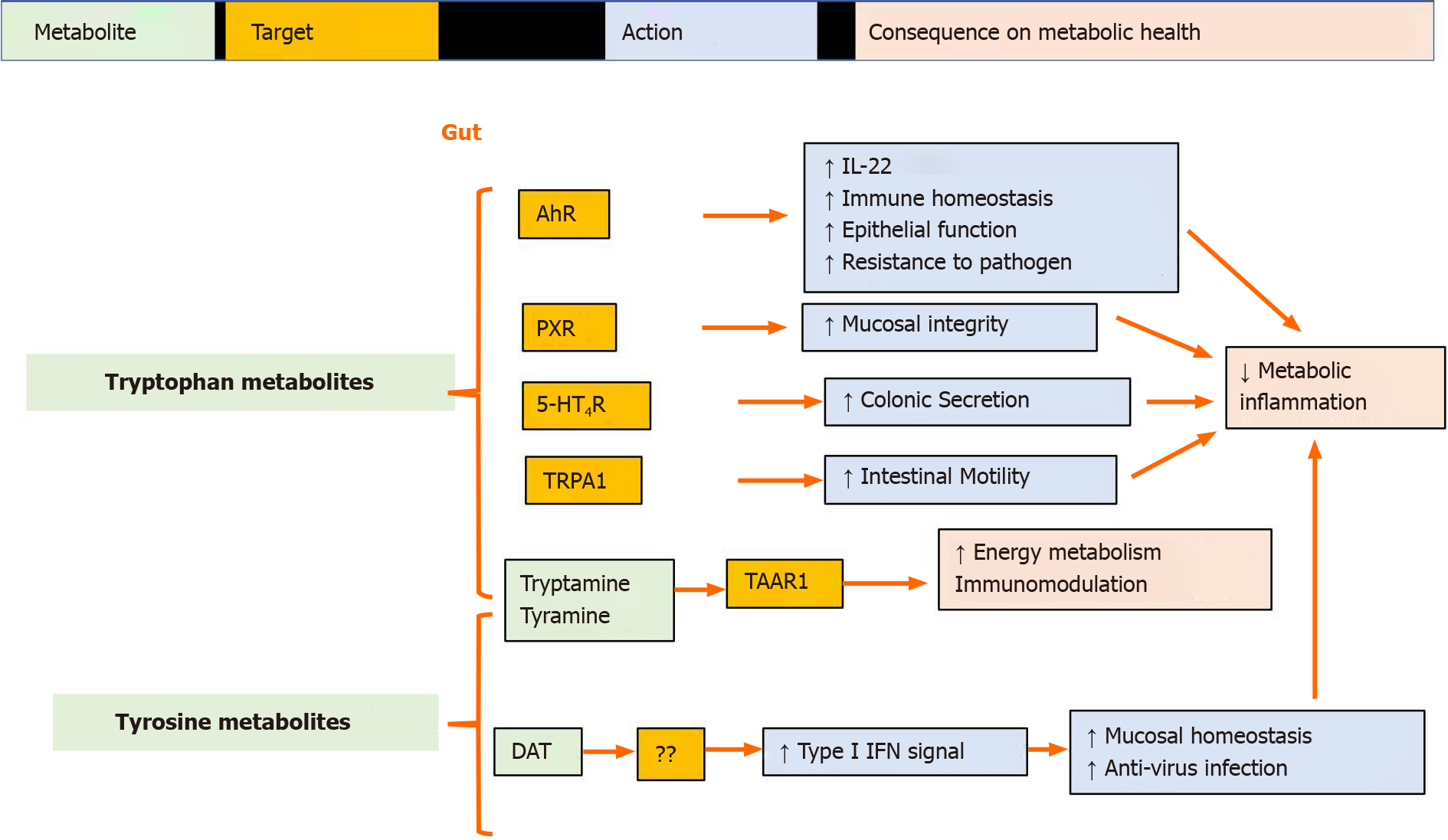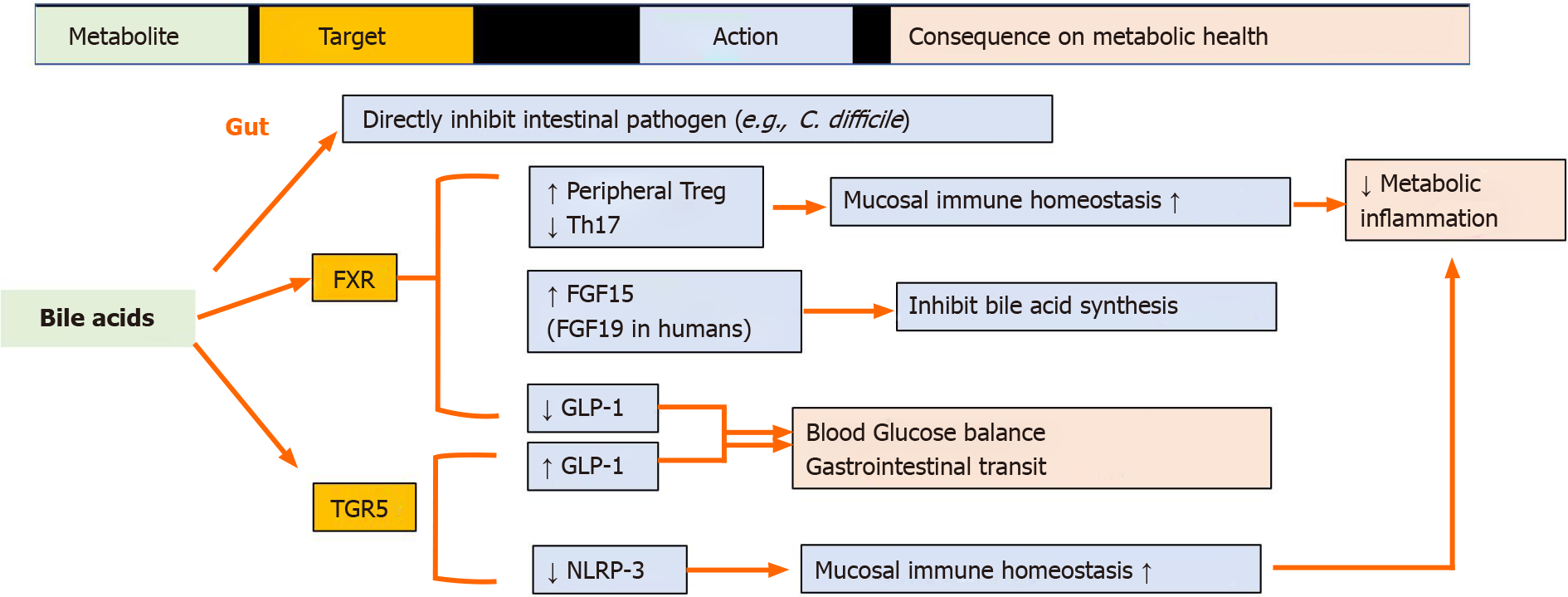Copyright
©The Author(s) 2021.
World J Gastroenterol. Sep 7, 2021; 27(33): 5555-5565
Published online Sep 7, 2021. doi: 10.3748/wjg.v27.i33.5555
Published online Sep 7, 2021. doi: 10.3748/wjg.v27.i33.5555
Figure 1 The roles of short-chain fatty acids in mucosal homeostasis and metabolic health.
Short-chain fatty acids (SCFAs) can engage various molecular targets in the gut, and play positive roles in maintaining mucosal barrier integrity and systemic metabolic health via regulating gut epithelial cell metabolic programming by activating peroxisome proliferator-activated receptor gamma signals, maintaining immune homeostasis by promoting peripheral regulatory T helper cell development and functions, and stimulating energy expenditure and insulin secretion by releasing the gut hormones peptide tyrosine and glucagon-like peptide-1. SCFAs also exert some negative influences on host metabolic health via the gut–brain axis. Angplt4: Angiopoietin-like protein 4; FFAR: Free fatty acid receptor; GLP-1: Glucagon-like peptide-1; GPR: G-coupled receptor; HDAC: Histone deacetylase; PPAR: Peroxisome proliferator-activated receptor; pTreg: Peripheral regulatory T helper cell; PYY: Peptide tyrosine.
Figure 2 The roles of the indicated amino acid metabolites in mucosal homeostasis and metabolic health.
Tryptophan and tyrosine metabolites can engage various molecular targets in the gut, and play positive roles in maintaining mucosal barrier integrity and regulating systemic metabolic health at least in part by modulating mucosal immune and epithelial cell functions via cytokine IL-22 or type I interferon, etc., or by promoting host energy metabolism via trace amine-associated receptor 1. The question mark indicates that the molecular target of desaminotyrosine is currently unknown. 5-HT4R: Serotonin receptor-4; AhR: Aryl hydrocarbon receptor; DAT: Desaminotyrosine; PXR: Pregnane X receptor; TAAR1: Trace amine-associated receptor 1; TRPA1: Transient receptor potential ankyrin A1.
Figure 3 The roles of bile acids in mucosal homeostasis and metabolic health.
Bile acids (BAs) have complicated roles in regulating mucosal immune cell activation and gut epithelial cell functions. Different BA profiles can produce both agonists and antagonists of their cognate receptors. Only the well-characterized intestinal targets of BAs and their actions are indicated here. FGF15: Fibroblast growth factor 15; FXR: Farnesoid X receptor; NLRP3: NLR family pyrin domain containing 3; TGR5: Membrane G protein-coupled bile acid receptor 1; Th17: T helper cells expressing IL-17a; Treg: Regulatory T helper cells.
- Citation: Wei YX, Zheng KY, Wang YG. Gut microbiota-derived metabolites as key mucosal barrier modulators in obesity. World J Gastroenterol 2021; 27(33): 5555-5565
- URL: https://www.wjgnet.com/1007-9327/full/v27/i33/5555.htm
- DOI: https://dx.doi.org/10.3748/wjg.v27.i33.5555











